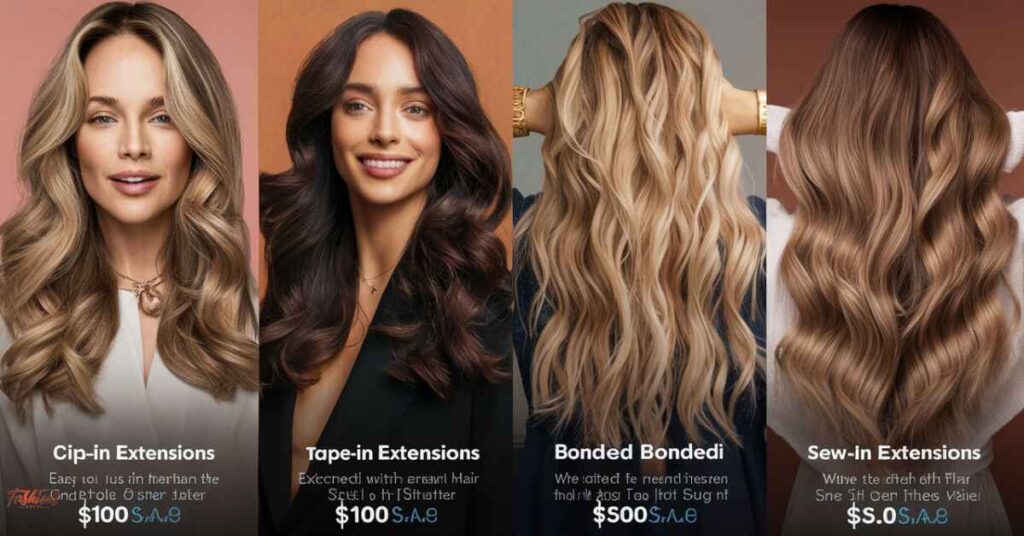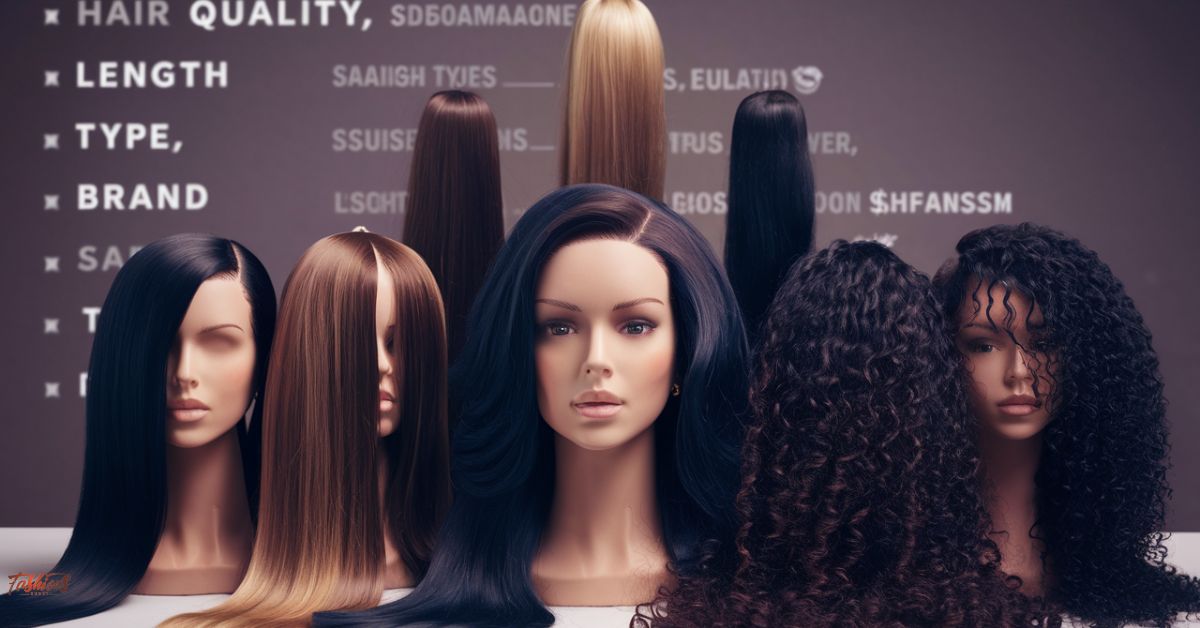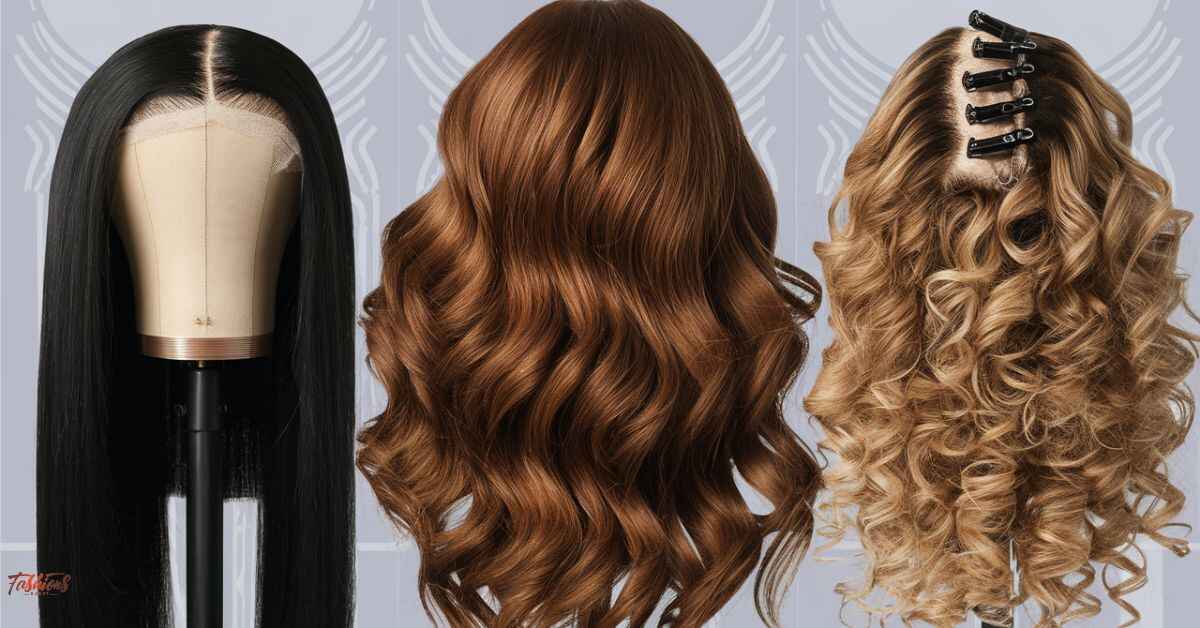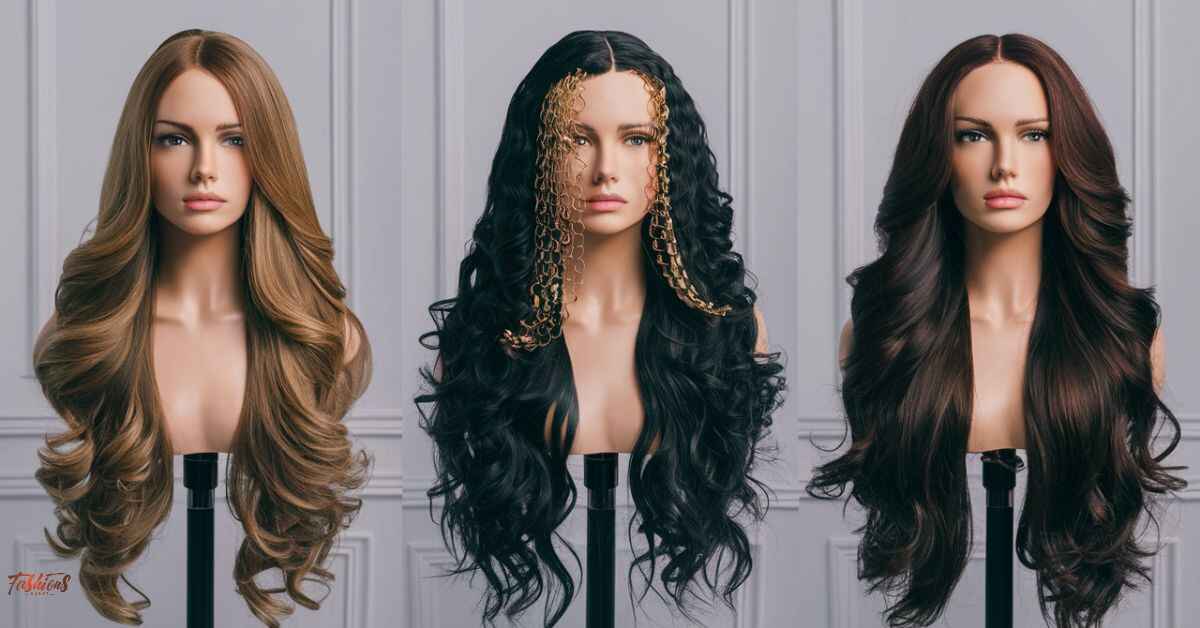Are you dreaming of luscious, long locks that effortlessly catch the eye? Hair extensions have become a popular solution for achieving thicker, more voluminous hair.
However, before embarking on this transformative journey, it’s crucial to understand the true cost of hair extensions. In this comprehensive guide, we’ll explore the factors influencing the cost.
We’ll also break down the expenses for different types of extensions and provide valuable tips to help you make an informed decision that aligns with your hair goals and budget.
Factors Influencing the Cost of Hair Extensions
The cost of hair extensions can vary greatly depending on several factors. Understanding these elements is key to determining the investment required for your desired look.
- Hair Quality: The quality of the hair used in extensions plays a significant role in determining the cost. Remy hair, which refers to cuticles that are all aligned in the same direction, is generally more expensive but provides a smoother, more natural look and feel.
Non-Remy hair, on the other hand, is more affordable but may tangle or matt more easily. Additionally, human hair extensions typically cost more than synthetic options, but offer a more natural appearance and longevity.
- Ethical and Sustainable Sourcing: Reputable hair extension brands often prioritize ethical and sustainable sourcing practices, which can drive up the cost. However, these practices ensure that the hair is obtained through fair trade and environmentally conscious methods, providing peace of mind for conscientious consumers.
- Hair Length and Texture: Longer hair extensions generally cost more than shorter lengths, as they require a greater amount of raw material. Similarly, extensions that closely match your natural hair texture may command a higher price due to the specialized processing required.
- Brand Reputation: Well-established and reputable hair extension brands often charge a premium for their products. They have built a reputation for quality and customer satisfaction.
- Permanent vs. Non-Permanent Extensions: Permanent hair extensions are applied by professional stylists and remain in your hair until they are removed. They typically come with a higher upfront cost and ongoing maintenance expenses.
- Non-permanent extensions, such as clip-ins or halos, are more affordable but may require more frequent replacement.
Non-Permanent Hair Extensions: Cost Breakdown
Non-permanent hair extensions offer a versatile and cost-effective solution for those seeking temporary length and volume. Here’s a closer look at the costs associated with different types of non-permanent extensions:
Clip-in Hair Extensions
Upfront Cost Range: $50 – $300 Cost of Clip-in Hair Extensions Maintenance: Minimal, as clip-ins can be easily removed and reused.
Clip-in hair extensions are a popular choice for those seeking a temporary solution. They are easy to apply and remove. This makes them a convenient option for special occasions or when you want to switch up your look.
The cost of clip-in extensions varies depending on the hair quality, length, and the number of wefts required for your desired fullness.
Pros:
- Affordable and reusable
- Easy to apply and remove at home
- Versatile for different hairstyles
Cons:
- May require frequent readjustment
- Can be noticeable at the root line if not blended properly
Halo Hair Extensions
Average Cost Range: $150 – $400
Halo hair extensions are a seamless, wire-based system that sits discreetly at the crown of your head, providing all-around volume and length. The cost varies based on the quality of the hair used and the desired length.
Pros:
- Comfortable and lightweight
- No damaging bonds or adhesives
- Easy to put on and take off
Cons:
- May require practice for proper placement
- Limited styling options due to the wire structure
Temporary Hair Extensions (Braids, Wigs, etc.)
Cost Range: $20 – $500
Temporary hair extensions, such as braids or wigs, offer a quick and affordable solution for adding length and volume. The cost can range from inexpensive synthetic options to high-end human hair pieces, depending on the quality and intricacy of the style.
Permanent Hair Extensions: Investment and Recurring Costs
Permanent hair extensions are professionally installed and integrated into your natural hair, providing a long-lasting solution for added length and volume. However, these extensions come with a higher upfront cost and require ongoing maintenance. Let’s explore the costs associated with different types of permanent extensions.
Tape-in Hair Extensions
Initial Cost Range: $200 – $800 Professional Installation Fees: $100 – $300 Cost of Tape-in Hair Extensions Maintenance: $100 – $300 every 6-8 weeks
Tape-in hair extensions are applied using adhesive strips that are sandwiched between your natural hair and the extensions. While the initial cost may seem reasonable, the ongoing maintenance expenses can quickly add up.
Pros:
- Natural-looking and seamless blend
- Reusable for multiple installations
- Suitable for various hair types
Cons:
- Adhesive can damage hair with improper removal
- Regular maintenance is required to avoid visible root growth
Fusion/Keratin Hair Extensions
Upfront Cost Range: $800 – $3,000 Salon Installation Fees: $300 – $800 Maintenance and Touch-up Costs: $200 – $500 every 2-3 months
Fusion or keratin hair extensions are individually bonded to your natural hair using a heat-activated keratin polymer. These extensions offer a seamless, long-lasting solution but come with a significant investment.
Pros:
- Natural, undetectable appearance
- Long-lasting with proper maintenance
- Suitable for various hair types
Cons:
- Costly upfront and maintenance expenses
- Heat from the bonding process can damage hair
- Time-consuming application process
Weave-in Hair Extensions
Average Cost Range: $200 – $800 Installation and Maintenance Costs: $100 – $300 every 6-8 weeks
Weave-in hair extensions involve braiding or sewing wefts of hair into your natural hair. The cost varies based on the hair quality, length, and the complexity of the installation process.
Pros:
- Versatile styling options
- Suitable for various hair types and textures
- Relatively affordable compared to other permanent options
Cons:
- Tightness can cause tension and discomfort
- Potential hair loss or traction alopecia with improper installation or maintenance
Microbead/Microlink Hair Extensions
Initial Cost Range: $500 – $1,500 Professional Installation Fees: $200 – $500 Maintenance and Touch-up Costs: $100 – $300 every 6-8 weeks
Microbead or microlink hair extensions are attached to your natural hair using small, cylindrical beads or links. The cost is influenced by the hair quality, length, and the number of rows required.
Pros:
- Long-lasting and natural-looking
- Suitable for various hair types and textures
- Minimal damage to natural hair
Cons:
- Initial investment is relatively high
- Beads can slip or loosen over time, requiring frequent maintenance
Hidden Costs of Hair Extensions
Beyond the upfront and maintenance costs, there are several hidden expenses associated with hair extensions. These should be factored into your budget:
- Coloring and Toning Services: To achieve a seamless blend with your natural hair, you may need to color or tone the extensions. This additional step can add $50 – $300 to the overall.
- Cutting and Blending: Professional cutting and blending services are often necessary to ensure a natural, cohesive look, typically costing $50 – $150.
- Specialized Hair Care Products: Maintaining the integrity and longevity of your hair extensions may require investing in specialized shampoos, conditioners, and styling products. These products are formulated for extension wearers and can range from $20 to $100.
- Travel Expenses to Salons: If you don’t have a salon specializing in hair extensions near you, you may need to factor in travel costs, including transportation, accommodations, and meals.
- Time Commitment for Maintenance Appointments: Depending on the type of extensions and your hair growth rate, you may need to schedule maintenance appointments every 6-8 weeks. This can be time-consuming and potentially require taking time off work or arranging childcare.
Read this blog: Mastering The Fluffy Edgar Haircut: Top 10 Styles To Rock!
Tips for Budgeting for Hair Extensions
Determining the right hair extension solution for your needs and budget requires careful consideration of several factors:
- Determine Your Hair Goals and Lifestyle Factors: Assess your desired look, whether you prefer temporary or permanent extensions. Consider how your lifestyle (e.g., physical activity, hair care routine) may impact the longevity and maintenance of the extensions.
Absolutely, let’s continue exploring tips for budgeting for hair extensions:
- Consider the Longevity and Maintenance Requirements: While non-permanent extensions may have a lower upfront cost, they may need to be replaced more frequently. This could potentially make them more expensive in the long run. Conversely, permanent extensions require a higher initial investment but can last longer with proper maintenance.
- Balance Upfront and Recurring Costs: Create a realistic budget that accounts for both the upfront cost of purchasing and installing the extensions, as well as the recurring maintenance expenses. This will help you avoid any financial surprises down the line.
- Explore Financing Options or Payment Plans: Some salons or hair extension providers offer financing options or payment plans, allowing you to spread out the cost over multiple installments, making the investment more manageable.
- Consult with Professionals for Personalized Recommendations: Schedule consultations with experienced hair extension stylists or specialists. They can assess your hair type, texture, and desired look, and provide personalized recommendations tailored to your needs and budget.
Caring for Your Hair Extensions: Maximize Your Investment
Regardless of the type of hair extensions you choose, proper care and maintenance are essential to ensure their longevity and maintain the health of your natural hair. Here are some tips to help you get the most out of your investment:
Proper Hair Care Routines
- Use sulfate-free and extension-safe shampoos and conditioners to prevent dryness, tangling, and premature shedding.
- Gently brush and detangle your hair extensions, starting from the bottom and working your way up to avoid excessive pulling or snagging.
- Protect your extensions from excessive heat by limiting the use of hot styling tools and using heat protectant products.
Avoiding Harsh Treatments and Heat Styling
- Avoid chemical treatments, such as coloring or perming. They can compromise the integrity of the hair extensions and cause premature shedding or damage.
- Minimize the use of heat styling tools. Excessive heat can lead to dryness, brittleness, and breakage of both your natural hair and the extensions.
Gentle Brushing and Detangling Techniques
- Invest in a high-quality, detangling brush or wide-tooth comb designed specifically for hair extensions.
- Always start from the bottom and work your way up, gently detangling knots and minimizing pulling or snagging.
- Use a leave-in conditioner or detangling spray to help minimize friction and breakage during brushing.
Sleeping Habits and Protective Hairstyles
- Wear your hair in a loose, protective style at night, such as a loose braid or a silk or satin scarf or bonnet, to minimize friction and tangling.
- Avoid sleeping directly on your hair extensions, as this can cause matting, tangling, and premature shedding.
Professional Maintenance Schedule
- Follow the recommended maintenance schedule provided by your hair extension stylist. This typically involves appointments every 6-8 weeks for touch-ups, tightening, or adjustments.
- Regular maintenance appointments not only ensure the longevity of your extensions but also help maintain the health of your natural hair.
By following these care guidelines, you can maximize the lifespan of your hair extensions. This ensures a seamless, natural-looking result that complements your desired style.
Also read: 15 Takuache Haircuts To Elevate Your Style Game In 2024
Frequently Asked Questions
How long do hair extensions last?
The lifespan varies, with non-permanent ones lasting weeks to months, while permanent extensions can stay for several months with proper care.
Are hair extensions worth it?
For many, yes. They offer versatility and volume, but the decision depends on your budget and desired look.
Can you wash hair extensions?
Yes, you can, but follow specific care instructions to maintain their quality and longevity.
Can you swim with hair extensions?
Yes, but it’s recommended to tie them up and use a swim cap to minimize exposure to chlorinated or salty water.
Conclusion
Investing in hair extensions can be a transformative experience, but it’s essential to understand the true cost involved. From non-permanent options like clip-ins and halos to permanent solutions like tape-ins, fusion, weave-ins, and microbeads, each choice comes with its own set of upfront and recurring costs. These costs vary based on factors such as installation, maintenance, and the type of extension chosen.
Remember, the cost of hair extensions isn’t just about the initial purchase – it’s a long-term investment that requires ongoing maintenance and care. By considering factors like hair quality, ethical sourcing, and your lifestyle needs, you can make an informed decision. This decision will align with your budget and desired look for hair extensions.
Consulting with experienced professionals and researching reputable brands can help you navigate the world of hair extensions. This ensures a seamless, natural-looking result that enhances your confidence and style.













